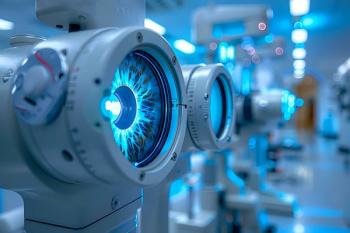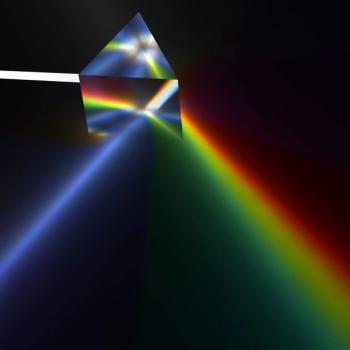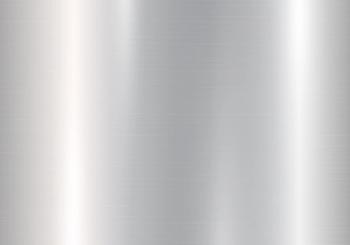
UV-vis Spectroscopy
Latest News



Researchers explore soft optical waveguides as a breakthrough technology for biocompatible sensing and robotics.

A recent review published in Sensors explores the dynamic field of continuum robotics, with a particular focus on the advances in optical sensing technologies. The study, led by researchers from the Technical University of Košice and the University of Texas at Austin, highlights the dominance of optical fiber sensors in tracking robotic shape perception and environmental interactions, demonstrating spectroscopic applications and future potential.

Researchers at Oregon State University explore how machine learning, optical sensors, and robotics are transforming food quality assessment and processing, improving efficiency and reducing waste.

Given the importance of this nomenclature in guiding authors and reviewers, we invite members of the spectroscopy community to provide feedback, suggest updates, or participate in future revisions.

Researchers have developed a high-sensitivity optical fiber vibration sensor based on Fabry-Perot (F-P) interference, designed to improve wind turbine tower monitoring. This innovation addresses issues with traditional electrical sensors and has strong potential for integration into the Internet of Things (IoT) for real-time structural health monitoring.

A study by researchers at Universidad de Talca in Chile explores the integration of artificial intelligence (AI), the Internet of Things (IoT), and remote sensing to modernize modern farming. The research highlights how these technologies optimize resource use, improve crop yields, and promote sustainable agricultural practices.

This article highlights key contributors who have significantly advanced the field of spectroscopy in recent decades.

A team of researchers from the International Iberian Nanotechnology Laboratory (INL) in Braga, Portugal, has developed an autonomous Internet of Things (IoT) spectral sensing system designed to monitor grape ripening in real-time. The study, led by Hugo M. Oliveira, Alessio Tugnolo, Natacha Fontes, Carlos Marques, and Álvaro Geraldes, was published in Computers and Electronics in Agriculture and introduces a novel approach to non-destructive, in-situ optical monitoring of grape maturity.

A new study examines the role of Internet of Things (IoT) technology in fostering sustainable urban development. Through a systematic review of 73 publications, researchers highlight how IoT-enabled sensors improve air quality, transportation, disaster management, and resource efficiency in smart cities.

Researchers have explored the Raman spectral properties of HgPSe3 thin flakes, revealing their structural uniformity and potential for high-performance ultraviolet-to-visible (UV-Vis) photodetectors. Their study, published in the Chinese Journal of Physics, highlights the material’s strong optoelectronic properties and fast response times.

In a new study, a team of scientists used gel permeation chromatography, three-dimensional excitation-emission matrix fluorescence spectroscopy, and UV-visible spectroscopy to assess road runoff from drinking water treatment plants to evaluate the method' capacity for removing dissolved organic matter (DOM).

This excerpt from The Concise Handbook of Analytical Spectroscopy, which spans five volumes, serves as a comprehensive reference, detailing the theory, instrumentation, sampling methods, experimental design, and data analysis techniques for each spectroscopic region.

A recent study looked at how spectroscopy can be used to differentiate ink based on its color and brand.

Microplastics (MPs) and nanoplastics (NPs) are emerging contaminants requiring robust analytical techniques for identification and quantification in diverse environmental and biological matrices. This review highlights various spectroscopy methods, such as Raman, FT-IR, NIR, ICP-MS, Fluorescence, X-ray, and NMR detailing their methodologies, sample handling, and applications for characterizing MPs and NPs.

Researchers from the University of Cordoba have validated a novel spectroscopy technique to help distinguish between extra virgin and virgin olive oils. This approach could support existing panel-based tests, which are often slow, costly, and subjective, by providing a faster, non-destructive screening option.

A new review highlights the promising role of non-destructive spectroscopy techniques in enhancing olive and extra virgin olive oil (EVOO) quality assessments. By combining spectroscopy with imaging, researchers uncover innovative ways to determine product authenticity and improve quality control in olive oil production.

This new study examines how spectroscopic techniques, such as attenuated total reflection Fourier transform infrared spectroscopy (ATR FT-IR), ultraviolet–visible–near-infrared (UV-Vis-NIR) spectroscopy, and Raman spectroscopy, were used to analyze the pigments in ancient Chinese wall paintings.

A new review highlights the use of ultraviolet–visible–near infrared (UV–vis–NIR) absorption spectroscopy in studying catalytic processes. The research discusses how this technique uncovers reaction mechanisms, structural properties, and reaction kinetics, particularly in heterogeneous and photocatalysis, and explores its potential for broader applications.

Hyperspectral imaging (HSI) is revolutionizing fields such as agriculture, food safety, and medical analysis by providing high-resolution spectral data. This emerging technology is proving invaluable in diverse applications, including plant stress detection, weed discrimination, and flood management. A new review explores HSI’s fundamental principles, applications, and future research directions.

Researchers from the University of Minho (Portugal) have developed a hyperspectral imaging database of human facial skin, aimed at improving various scientific applications such as psychophysics-based research and material modeling. The database includes 29 participants with diverse skin tones, providing detailed spectral reflectance data under controlled conditions.

A recent study examines how Raman spectroscopy and UV-vis spectroscopy can be used in the quality control of over-the-counter medications (OTCMs), ensuring their authenticity.

Recent James Webb Space Telescope (JWST) observations have revealed intricate details about the surface compositions of dwarf planets Sedna, Gonggong, and Quaoar. Using spectroscopy, researchers have detected a rich variety of ices and organic compounds, shedding light on the effects of size and orbit on these distant solar system bodies.

Tanta University recently published a review article that highlighted the versatility of metal complexes in analytical chemistry. We recap their research here.

A recent study explores the effectiveness of near-infrared (NIR) and ultraviolet-visible (UV-vis) spectroscopy in determining the time since deposition (TSD) of bloodstains, a critical aspect of forensic investigations. By comparing these two methods, researchers aim to improve the accuracy and reliability of bloodstain dating, with potential implications for real-world forensic applications.




